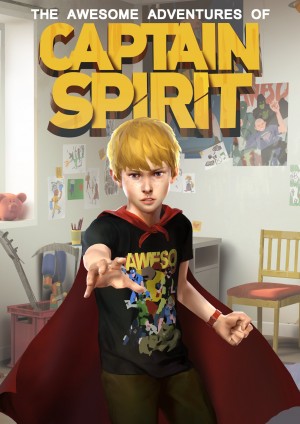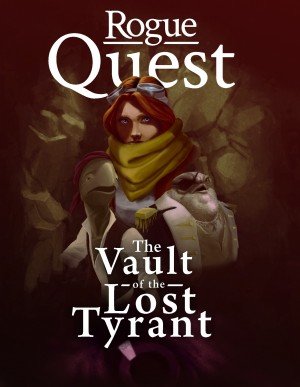Review for The Walking Dead: The Final Season – Episode One: Done Running

The Walking Dead made Telltale Games a force to be reckoned with in the sphere of interactive stories. Everyone seemed to be talking about the journey of Lee and Clementine, an escaped convict and a young girl doing everything they could to survive a world in ruin – reckoning not only with the undead, but also the darkest depths of humanity. It was the first game to ever make me feel truly emotionally connected to its characters. I cared for them, thought about them when I wasn’t playing. I’ve cried watching films and reading books, but in a video game? Never. Until then.
The intense popularity of that first season was an unexpected surprise, so Telltale went on to release two more full seasons, a standalone episode and a shorter mini-season. Unfortunately, none really captured the spark of the original, instead showing increased signs that the post-apocalyptic zombie drama was wearing thin.
Enter The Walking Dead: The Final Season. Whether it really will be the last is debatable, but we’re assured the four episodes here will be the conclusion of Clementine’s tale. Jumping forward three or four years from the previous season, Clem is certainly no longer the adorable little girl we met all those years ago in the treehouse. We’ve seen her grow over the various games, both physically and mentally. Having spent most of her life trying to survive, she’s become much stronger, but still sensible and caring. That is even more important now that she’s looking after a walking and talking AJ, who appeared hitherto only as a baby.
“AJ is always listening.” Those words gave me pause when they appeared on-screen. While AJ doesn’t actually call Clementine his mother, that is essentially her role, and like any child he is learning from you, just as Clem once learned from Lee. She teaches the child mantras to live by – and when death is around every corner, these are even more meaningful. I wanted to make sure that every action I performed, every word I spoke, was geared towards making AJ the best he could be. Not only the best at staying alive, but also as a decent and friendly human being, like telling him not to swear. Those who do the same will find it can prove difficult, not least because AJ hasn’t had much of a chance to integrate with others. It’s going to be really interesting to see how Clem and AJ’s relationship grows over the course of this season.
In the debut instalment, entitled Done Running, we join the pair as they’re driving through the country, on the hunt for food. Clem is at the wheel, and AJ is fiddling with a loaded gun. While he says he’s too old for the nickname “goofball”, seconds later he’s complaining about having to practice his reading; still a kid at heart, despite the violence all around. They soon come across an abandoned railway hut, but things take a turn and they end up at a boarding school, occupied by children of various ages after the teachers abandoned ship. Marlon, an older boy with an awful haircut, is in charge and seems to have a good thing going with mapped safe zones and hunting grounds. I never feel completely safe when playing as Clem – disaster seems to follow her, or maybe it’s just inevitable for everyone – but it’s a nice change of pace to meet a group that are all a similar age to our protagonist and aren’t completely jaded by the grimness of reality, each possessing various levels of childhood naivety.
There are ten kids in the school and you’ll get a chance to interact with all of them, albeit some more significantly than others. One scene involves Clem leading AJ around the group to try to integrate him, which is serviceable as a device but a bit by-the-books in its dialogue. You’ll meet Louis, quippy and full of swagger; Violet, more hardened and sarcastic; and Brody an anxious dreamer. Some skirt close to archetypes, but time spent with them is never dull. As usual, it’s often the quieter moments that stand out. Early on, Louis is playing the piano while a hesitant AJ watches, convinced that it must be dangerous because it’s loud. But when he hears a rendition of “Oh My Darling, Clementine”, he gasps and his eyes light up. It’s simultaneously heart-warming and sad. In this universe, music has become a luxury and is perhaps even more powerful because of it.
Another friendly face is Tennessee, a younger boy of similar age to AJ, who has lost his sisters. The two connect over a different artistic output: drawing. Tennessee is one of the few who believe in the afterlife, or at least openly talk about it, and reflects that in his artwork. When AJ picks up the pencils, he draws himself protecting Clem with a gun. It’s not lingered on, and I appreciated the subtlety as again I felt that mix of emotions. It’s great that this young boy can express himself through drawing, but that his inspiration is rooted in wielding a weapon is dismaying. But he’s a product of this world and hasn’t known anything before it, a fact clearly expressed in his jumpiness and possessiveness.
As is standard with a Telltale production, though always worth highlighting, the voice acting is high calibre across the board. Special acknowledgement must go to Melissa Hutchinson as Clementine, who once again infuses her role with raw and powerful emotion at yet another age of development, one of the key reasons the character continues to be so endearing. I went back and listened to her in previous seasons and the transformation over the years is stark, displaying a remarkable range of acting talent – I’d forgotten how young and innocent Clem used to sound. Everyone else is great here too, lending authenticity and natural flow to the dialogue. Taylor Parks does a wonderful job of conveying AJ’s curiosity, despite probably sounding slightly too old.
If you’ve played a Walking Dead game before (and if you haven’t, this isn’t the one to start with), you’ll already be familiar with how to progress the story. What’s changed is that the occasional ‘exploration’ elements are now presented in an over-the-shoulder camera perspective that you can control separately from character movement. This has the benefit of drawing you closer to Clem, both literally and figuratively, and is a great addition. Nevertheless, the actual exploring is still as limited as ever. You’re always confined to a specific environment or room, and if you try to veer elsewhere you’ll encounter a conveniently placed blockade or just a dismissal of your action from Clem. Frankly, at this point it’s expected so not a big deal, plus it keeps the story moving. There’s stuff peppered around that you can inspect or pick up, some of which, in a cool touch, can be placed in your room at the school later. But there’s once again nothing that would constitute a 'puzzle' with the inventory you collect.
How you dispatch the ravenous zombies has also been tweaked, though the infamous Quick Time Events – bashing the right button on either keyboard or gamepad as dictated by an on-screen prompt – still exist. Some battles give you direct control of Clem, though they’re on-rails with no finesse or complexity involved. Sure, you can choose which enemy to approach first, but you’re moving inside a small zone and they all need to be killed anyway. A press of a button will let you temporarily disable a walker or go in for the full kill. Despite the varied animations, these two actions soon grow repetitive. I ended up dying a couple of times during these scenes and never felt they were deserved because the enemies behave inconsistently. I actually prefer the older QTEs because at least they make for a more cinematic experience – that’s what Telltale shine at, not half-hearted combat mechanics.
The bulk of the gameplay is of course handled through conversation. At points you get three dialogue options, or silence, which let you choose how Clem responds and interacts with those around her. You’ve only got a limited time to select, which puts the pressure on. There’s no changes to how this works, but if it ain’t broke, don’t fix it. There are also larger choices that can affect the short-term circumstances, like whether you let AJ sleep under the bed as he wishes, or who you turn to for support during an argument. None of these have any big consequences so far when comparing one choice over another, though it’s still early days, and they often work well as morality questions.
Much of this episode is spent within the school grounds and its surrounding area, which can feel restrictive and sometimes presents pacing problems, but does well in establishing it as your temporary home. Hopefully we’ll get to venture farther out as the season goes on. Despite falling into disarray, with broken windows and collapsing roofs, the school is surrounded by a solid brick wall and make-shift barriers that form a fortified perimeter. Beyond that you’ll spend time hunting, either in the forest or the river depending on your choice. I opted for the latter, which took me to a shack and led to some nice character bonding between Clem and Violet as I attempted to spear fish when they swam past.
The more you explore, the more you’ll notice how superior the graphics are compared to previous outings. Characters retain their distinctive outlines and sketch-like marks, but are more expressive than ever before, or at least better at showing nuance. Their eyes now noticeably represent the windows to the soul that they should, especially in close-ups. Backgrounds really extend the graphic novel feel, submerging things in deep, inky blacks that push the gritty atmosphere. The use of lighting is better too, like shadows cast on people’s faces or fires illuminating an area. Elements like hair, clothes and plants have more movement to them too, though sometimes this is overdone and looks out of place.
Something I want to single out as being wholly impressive is a sequence near the beginning when Clem and AJ are escaping from a horde of walkers, which succeeds as some of the most thrilling action the series has ever produced. It’s presented without any camera cuts, smoothly switching between cutscene and player interaction (a combination of third-person and brief first-person) and is masterfully directed. You feel right there in the moment; the unrelenting panic of the pair is palpable, visible in their faces as they do everything they can to survive. These games often highlight the horrors of humans, which is wise, but sometimes at the expense of turning the zombies into more pedestrian obstacles – that’s not the case here, where it’s properly tense and the protagonists are confronted with an all-out threat. Sadly, the rest of the episode is light on this sort of action, though the ending provides a whole different kind of excitement to finish on a high note.
Total playtime is around two and a half hours, which is a satisfying length. The last twenty minutes of the episode are pure, unexpected tension that had me on the edge of my seat throughout thanks to the excellent atmospheric horror and powerful character interaction. And that ending? I’m ready to wolf down the next episode already, especially to see the repercussions. While there are still three episodes to come in The Walking Dead’s final season, I have reason to believe that Telltale are onto something good here. If they continue to explore Clem and AJ’s unique relationship while mixing engaging interpersonal dialogues with more superb action set pieces, this may just be a memorable way to wrap up Clementine’s adventure.





























